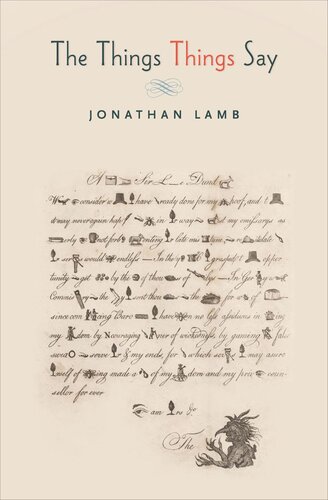

Most ebook files are in PDF format, so you can easily read them using various software such as Foxit Reader or directly on the Google Chrome browser.
Some ebook files are released by publishers in other formats such as .awz, .mobi, .epub, .fb2, etc. You may need to install specific software to read these formats on mobile/PC, such as Calibre.
Please read the tutorial at this link: https://ebookbell.com/faq
We offer FREE conversion to the popular formats you request; however, this may take some time. Therefore, right after payment, please email us, and we will try to provide the service as quickly as possible.
For some exceptional file formats or broken links (if any), please refrain from opening any disputes. Instead, email us first, and we will try to assist within a maximum of 6 hours.
EbookBell Team

4.7
76 reviewsOne of the new forms of prose fiction that emerged in the eighteenth century was the first-person narrative told by things such as coins, coaches, clothes, animals, or insects. This is an ambitious new account of the context in which these "it narratives" became so popular. What does it mean when property declares independence of its owners and begins to move and speak? Jonathan Lamb addresses this and many other questions as he advances a new interpretation of these odd tales, from Defoe, Pope, Swift, Gay, and Sterne, to advertisements, still life paintings, and South Seas journals.
Lamb emphasizes the subversive and even nonsensical quality of what things say; their interests are so radically different from ours that we either destroy or worship them. Existing outside systems of exchange and the priorities of civil society, things in fact advertise the dissident obscurity common to slave narratives all the way from Aesop and Phaedrus to Frederick Douglass and Primo Levi, a way of meaning only what is said, never saying what is meant. This is what Defoe's Roxana calls "the Sense of Things," and it is found in sounds, substances, and images rather than conventional signs.
This major work illuminates not only "it narratives," but also eighteenth-century literature, the rise of the novel, and the genealogy of the slave narrative.